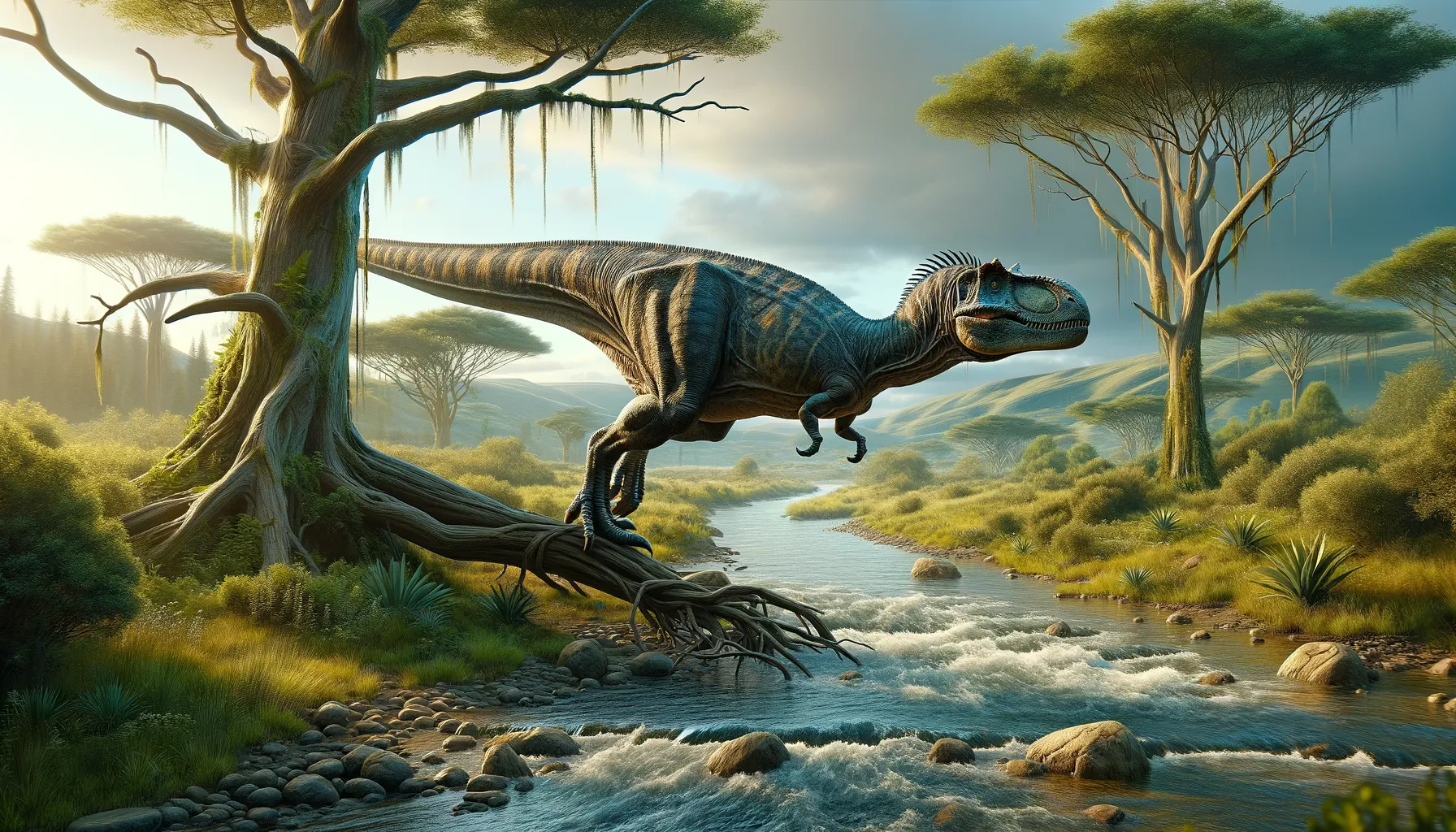
Pareisactus
Adapted to thrive in the Cretaceous.
Period
Cretaceous
Length
Around 7 meters long.
Height
Up to 3 meters at the shoulder.
Weight
Approximately 1,000 kilograms.
Pareisactus was a medium-sized dinosaur that thrived during the Cretaceous period. Known for its moderate speed, it had a lifestyle that balanced between foraging and occasional hunting. Its first discovery traces back to the mid-20th century, providing valuable insights into the ecosystem dynamics of its time. While it wasn't the largest or the fastest, Pareisactus was a well-adapted dinosaur that faced various environmental challenges with resilience.
Diet
Pareisactus was likely an omnivore, consuming both plants and small animals. It relied on a diverse diet, which helped it adapt to varying seasonal resources.
Hunting
As an opportunistic predator, Pareisactus likely hunted smaller prey when the opportunity arose. Its hunting strategy would have been less about speed, focusing more on stealth and surprise.
Environmental challenges
Pareisactus faced challenges such as fluctuating climates and competition for resources. Periods of drought could have pushed it to forage in less optimal areas. Its ability to feed on a variety of food sources was crucial for survival in tough times.
Speed
Moderate for a medium-sized dinosaur.
Lifespan
Estimated around 25 to 30 years.
First discovery
First discovered in the mid-20th century.
Fun Facts
- Pareisactus was a dinosaur that lived during the Late Jurassic period, around 150 million years ago.
- This dinosaur's name means 'unique shield', referring to its distinctive body armor.
- Pareisactus was a herbivore, spending its days munching on plants and vegetation.
- It belonged to a group of dinosaurs known as ankylosaurs, which are famous for their heavily armored bodies.
- Fossils of Pareisactus have been found in Europe, giving us a peek into the dinosaur life on that continent.
- Unlike some of its spiky relatives, Pareisactus had a smoother armor with fewer spikes and knobs.
- Despite its tough exterior, Pareisactus was relatively small compared to some of its dinosaur contemporaries.
Growth and Development
Young Pareisactus grew rapidly to avoid predation. They would have relied on a rich, diverse diet from an early age. Their development involved significant changes in size and body form as they matured.
Habitat
Pareisactus thrived in mixed forest and plains. It preferred areas with easy access to both plant and animal food sources. Its habitat provided ample opportunity to evade larger predators.
Interaction with other species
Pareisactus likely interacted with numerous other species, both as predators and prey. Its social interactions may have involved territorial displays and minimal cooperation. It shared its ecosystem with a variety of herbivores and carnivores.
Natural lifespan
It lived naturally up to about 25 to 30 years.
Reproduction
Pareisactus laid eggs in nests on the ground. The species likely displayed some form of parental care to enhance the survival of its offspring. Nesting sites were carefully chosen away from predators.
Social behaviour
It was likely a solitary creature or formed small groupings. Social behavior may have included vocalizations to warn of predators. During mating seasons, Pareisactus would have shown more interaction.
Fossil locations
Fossils of Pareisactus have been primarily found in regions that were once lush forests and plains. The most significant discoveries have been in well-preserved sedimentary deposits. These locations provided rich data on the Cretaceous ecosystems.
